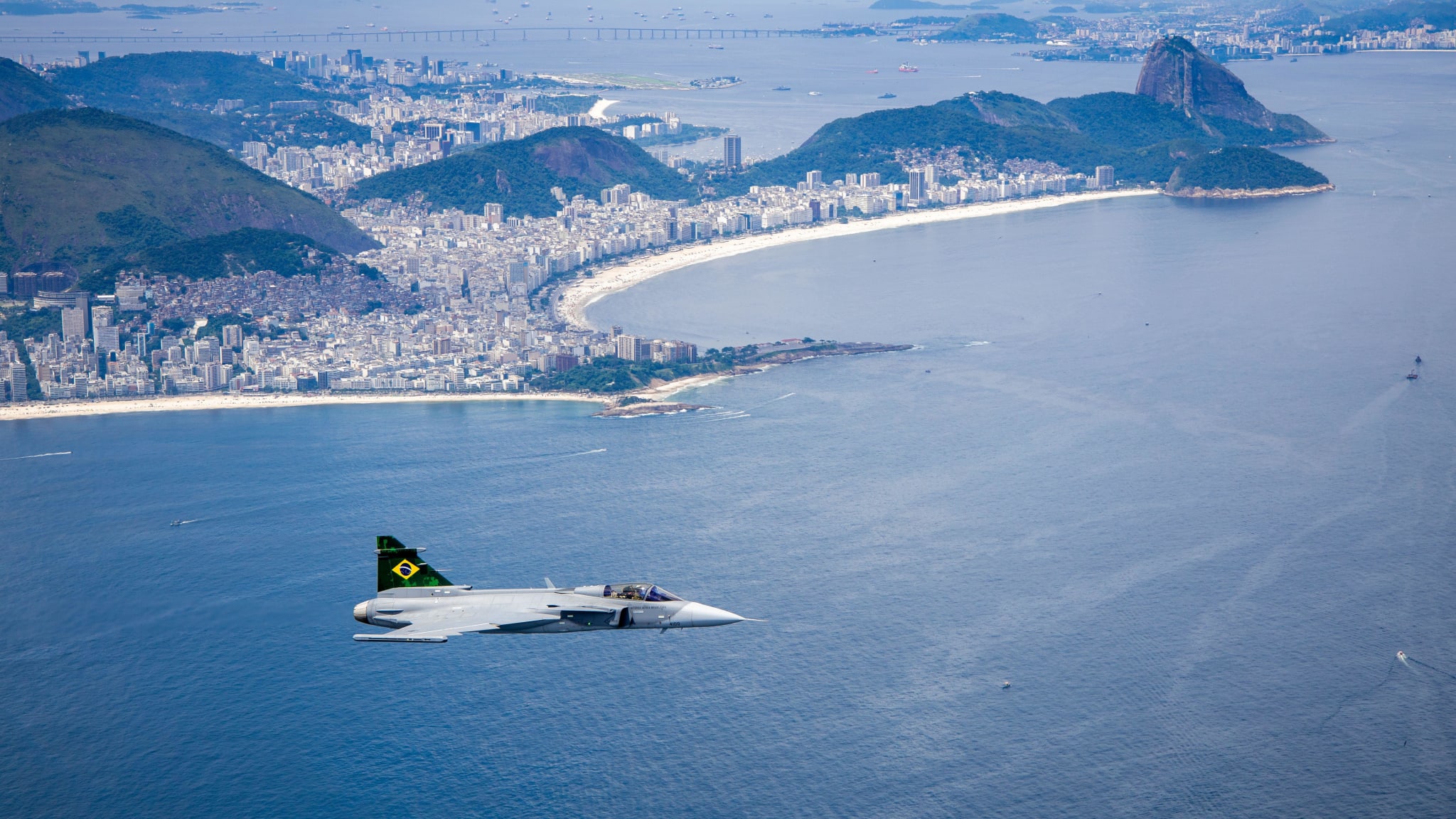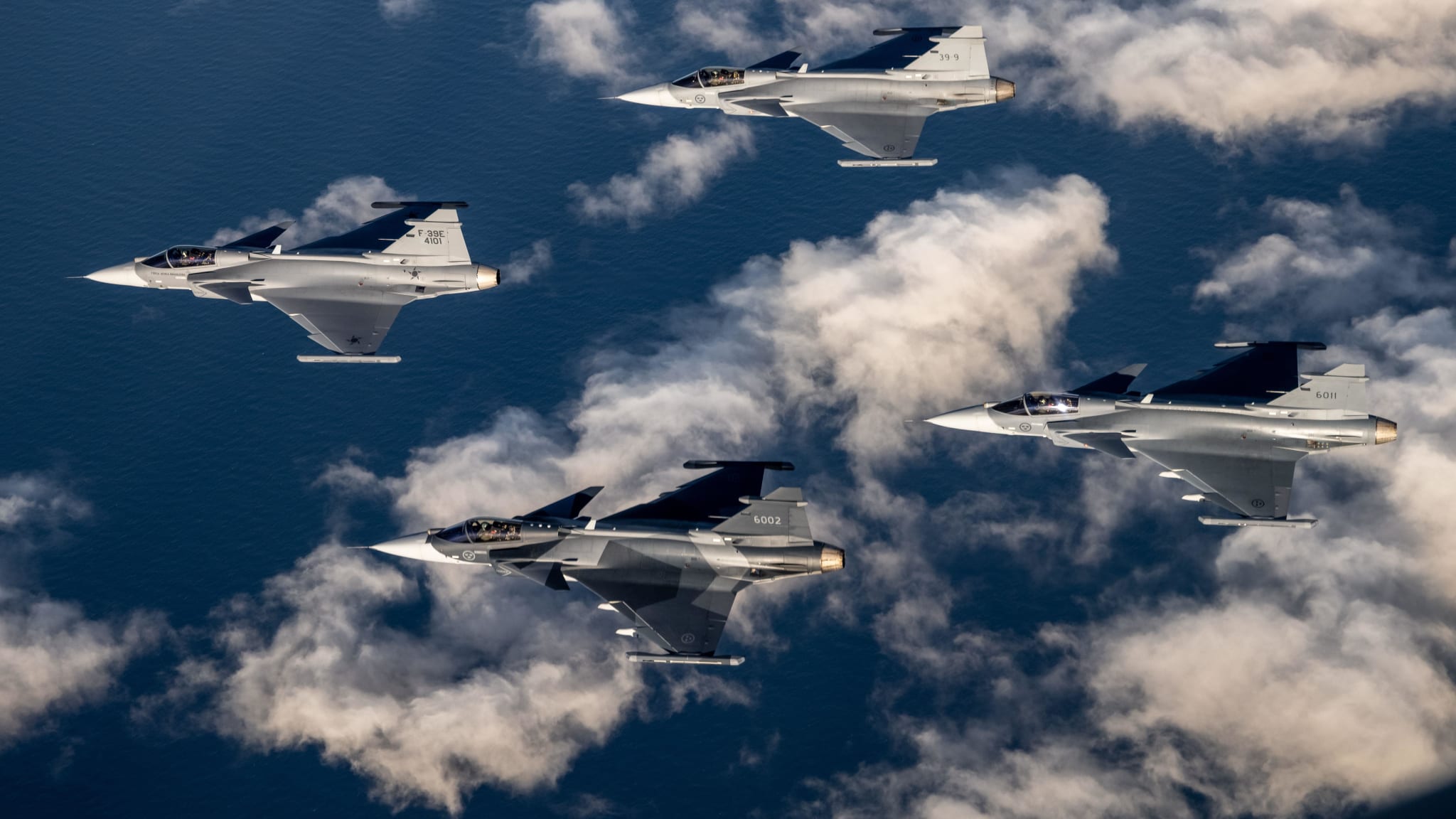Finland’s decision to acquire the US-made F-35 stealth fighter seems to have upset Saab, the maker of the Gripen jet. However, its chief executive remains optimistic about its chances of winning a Canadian contract later this year.
“I am disappointed when it comes to the selection by Finland to go the US way,” Micael Johansson said during a full-year results briefing on February 11. “We had a great offer to Finland in all aspects. I don’t see how we could have done it better.”
Finland announced in December that it would replace its aging F/A-18 fighter jets with 64 F-35 fighter jets and weapons systems in a $9.4 billion contract. For the same deal, Saab, a Swedish aerospace firm, was pitching a package including two Gripen-E jets and two Bombardier Global 6000-based GlobalEye surveillance planes.
He said the decision to opt for F-35 may have been taken based on political judgments. “Everything comes to politics sometimes – this is not only about having a great product,” Johansson said, adding, “We have several opportunities going forward on the Gripen side.”
Eying Canadian Deal
The Royal Canadian Air Force (RCAF) is currently looking for a new fighter jet to replace its aging CF-18 Hornets. After Boeing was ruled out of the race, the F-35A and Gripen E qualified to compete in the final phase for the 88-plane contract.
“We have a clear answer from the Canadians that we have passed certain requirements for affordability, capability, and security when it comes to having our system working inter-operably within the Two Eyes, Five Eyes, and NORAD context,” Johansson says. “We are now waiting for the next steps from them.”

He acknowledges that political issues will undoubtedly play a role in the decision-making process but adds, “We can only do what we are best at. We give countries sovereign capability – we transfer technology, we set up shop in-country, with the capability to manufacture and further develop our systems.”
Canada is likely to reach a decision and award a contract under its Future Fighter Capability Project in 2022. Last year, Saab’s first six Gripen-Es rolled out from its Linkoping facility, kicking off the delivery process for the Swedish and Brazilian air forces. The two services have placed joint orders for 96 new-generation fighters.
Saab Gripen-E
The Gripen-E is an upgraded variant of the Gripen C/D multi-role aircraft that is powered by a GE F414G turbofan engine. It can carry a maximum payload of 16,500 kg and travels at Mach 2.
According to Saab, it has a new AESA-radar, an Infrared Search and Track System (IRST) to monitor threats over greater distances, sophisticated electronic warfare and communication systems, and superior situational awareness. As described by its manufacturer, “The E-series redefines airpower for the 21st century by extending operational capabilities.”

The Gripen E-series’ Human-Machine Collaboration (HMC) feature integrates tactical technologies that provide only pertinent information to the pilot by filtering out any other highly technical and confusing data. In times of crisis, this helps the pilot to save time and act practically instantaneously.
Gripen is not stealthy, but several countries are interested in it because of Saab’s willingness to work with indigenous industries and accept offset conditions. In 2015, the older Saab Gripens C/D with the Thailand Air Force defeated the Chinese J-11 aircraft in wargames, as Eurasian Times previously reported.
Does Gripen-E Stand Chance?
As mentioned previously, Saab is offering its Gripen-E model to Canada. The Gripen-E is an upgraded variant of the Gripen C/D multi-role aircraft. The company is pitching the same model to India.
The generation-less fighter, Gripen’s advanced capabilities and upgradeable design make it the future-proof choice for the Royal Canadian Air Force.
— Saab Canada, Inc. 🇨🇦 (@Saab_Canada) November 8, 2021
The technological advantages definitely favor Lockheed Martin’s offering, notably because Canada could acquire the future Block 4, which is more advanced than the present F-35 model.
However, Saab’s Gripen proposal for Canada is attractive because of its technology transfer offer and significant offset program, which involves building two aerospace sites in Canada.

The competition’s result should be revealed in 2022, with the first new fighters slated to arrive in 2025. Meanwhile, a limited number of RCAF CF-18s will be equipped with AESA radars to ensure that they have a minimum of current operating capabilities until the middle of the decade.
Sweden is not a member of NATO or Norad, the joint Canadian-American defense command in charge of safeguarding the continent against foreign threats. This led to the question about the Gripen’s interoperability with American aircraft.
Experts believe Canada needs to decide if it wants greater independence and autonomy from the US in the future or stronger integration with its main continental and NATO partner. The real question is — which of the two approaches will benefit Canada the most in the long run?
- Contact the author at ashishmichel@gmail.com
- Follow EurAsian Times on Google News




